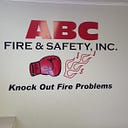The Evolution of Safety: From Ancient Roots to Modern Fire Sprinkler Systems
Introduction:
The quest for safety has been an enduring human endeavor, dating back to ancient civilizations. Over the centuries, advancements in technology and knowledge have played a pivotal role in shaping safety measures. This article traces the evolution of safety from its ancient roots to the sophisticated systems we have today, with a particular focus on the development and significance of modern fire sprinkler systems.
Ancient Roots:
- Early Fire Mitigation Techniques: In ancient times, communities faced the constant threat of fires, often exacerbated by the widespread use of open flames for cooking and heating. Early civilizations developed rudimentary techniques such as using sand, water, or animal skins to smother flames. However, these methods were limited in their effectiveness and lacked the precision needed for targeted fire suppression.
- Ancient Water Clocks and Automata: Ancient civilizations, including the Greeks and Romans, demonstrated a growing understanding of hydraulics. Water clocks and automata, driven by water flow, were developed for various purposes, showcasing an early form of automated systems. While not explicitly designed for fire safety, these innovations laid the groundwork for the automation principles crucial to modern fire sprinkler systems.
Medieval and Renaissance Advances:
- Leather Buckets and Hand-Pumped Engines: During the medieval period, communities organized bucket brigades to combat fires, passing leather buckets of water from person to person. The Renaissance saw the development of hand-pumped engines, which allowed for more effective water delivery. These innovations marked significant progress but were still reliant on human effort and lacked the autonomy of modern fire suppression systems.
- Huygens’ Fire Hose: In the 17th century, scientist Christiaan Huygens invented the fire hose, a flexible tube that could deliver water more efficiently than traditional methods. This marked a crucial step towards mechanized fire suppression and demonstrated the potential for technological advancements in firefighting.
19th Century Innovations:
- Automatic Fire Sprinkler Patents: The 19th century witnessed a surge in industrialization and urbanization, leading to an increased need for fire safety. In 1810, Sir William Congreve patented a manual sprinkler system, an early attempt at automating fire protection. Later in the century, Henry S. Parmelee patented the first automatic fire sprinkler in 1874, a landmark development that laid the foundation for modern fire sprinkler systems.
- Grinnell’s Fire Sprinkler System: Frederick Grinnell’s advancements in the late 19th century marked a turning point. He improved upon Parmelee’s design, introducing a reliable and practical automatic fire sprinkler system. Grinnell’s system utilized a glass bulb filled with a liquid that would burst when exposed to heat, triggering the release of water. This innovation revolutionized fire safety and paved the way for widespread adoption.
Modern Fire Sprinkler Systems:
- Advancements in Material Science: As technology continued to advance, fire sprinkler systems evolved to incorporate new materials and engineering principles. Corrosion-resistant materials, such as stainless steel, became standard, enhancing the durability and longevity of sprinkler systems.
- Integration with Building Automation: In the 21st century, fire sprinkler systems are seamlessly integrated into building automation systems. This integration allows for real-time monitoring, rapid response to potential threats, and the ability to coordinate with other safety measures, such as smoke detectors and emergency lighting.
- Sustainability and Water Conservation: Modern fire sprinkler system are designed with sustainability in mind. Water conservation measures, such as the use of low-flow sprinkler heads and advanced control systems, ensure effective fire suppression with minimal water wastage, addressing environmental concerns.
Conclusion:
The evolution of safety from ancient roots to modern fire sprinkler systems reflects humanity’s unwavering commitment to protecting lives and property. From early attempts at manual fire suppression to the sophisticated, automated systems of today, each era has contributed to the development of safer environments. The journey from leather buckets to advanced sprinkler technology demonstrates the remarkable progress made in mitigating the destructive impact of fires.
As we continue to build on this legacy of innovation, it is essential to recognize the importance of modern fire sprinkler systems. These systems not only represent a culmination of centuries of progress but also serve as a testament to our ability to harness technology for the greater good. In embracing the latest advancements, we ensure that the flame of safety, kindled in ancient times, continues to burn brightly in our modern world.
